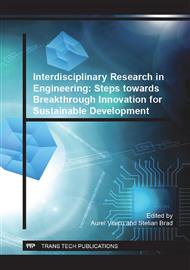p.259
p.269
p.277
p.285
p.293
p.301
p.309
p.317
p.327
Characterization of the Plastic Behaviour of AA6016-T4 Aluminium Alloy
Abstract:
The current trend in the automotive industry consists in decreasing the weight of the car body to reduce the fuel consumption and the air pollution. This can be done by using low-density materials such as the aluminium alloys having good formability. A frequently used aluminium alloy in the manufacturing of the car body components is AA6016-T4. The paper presents a full mechanical characterization of this material with 1 mm thickness. The investigation starts by performing tensile tests on specimens cut at 0o, 45o and 90o from the rolling direction. For each direction, the yield stress and the anisotropy coefficients are determined. The mechanical parameters of the Hollomon hardening law are determined using the experimental data obtained on samples cut along the rolling direction. Besides the uniaxial parameters, the equibiaxial yield stress and the equibiaxial coefficient of anisotropy are determined by performing bulge tests and compression tests, respectively. The yield surface is characterized in the first quadrant not only by the uniaxial and equibiaxial yield stresses but also by the yield stresses associated to the plane strain status. An experimental strategy for determining the plane strain parameters based on bulge tests is described in the paper. The characterization of the AA6016-T4 aluminium alloy ends with the determination of the forming limit diagram. The tests used for determining the limit strains are the punch stretching and hydraulic bulging.
Info:
Periodical:
Pages:
293-300
Citation:
Online since:
June 2013
Authors:
Permissions:
Share:
Citation:


